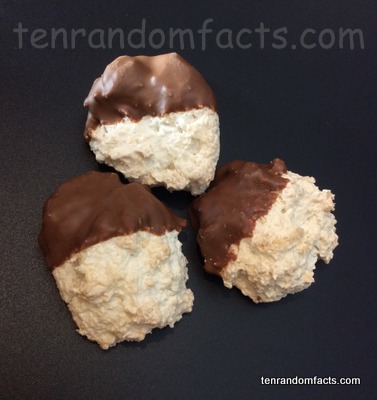Don’t get macaroons confused with macarons!
- Macaroons are usually wheatless sweet snacks that are quite similar to cookies, and they are generally suitable for those requiring a gluten-free diet.
- Macaroons are primarily made of sugar, whipped whites of eggs, and coconut and/or almond flour, and they are usually baked in an oven.
- Macaroons can be dipped in chocolate, or contain or be decorated with glacé cherries, jam or nuts.
- The term ‘macaroon’ it said to come directly from the word ‘maccarone’ or ‘maccherone’, Italian for food with a ‘paste-like appearance’, in reference to almond paste, which was the traditional base ingredient.
- Macaroons are often confused with the popular macaron, and although they have similar ingredients, the two sweets are vastly different in appearance, though some people use the terms interchangeably.
- The texture of macaroons can be rough and uneven, especially if they are made with coconut, and they are generally raised in the centre; while macarons usually have a smooth and even appearance, and are sandwiched together with a creamy filling.
- Macaroons became popular and favoured by Jews due to the snack’s unleavened nature, meaning it can be enjoyed throughout the Passover period.
- It is thought that macaroons originated from Italy, perhaps as early as the 700s to 800s, and the food likely spread to France by the 1500s.
- Coconut varieties of macaroons are typically high in fat, carbohydrates and manganese.
- Macaroons have also been known as ‘mackaroons’ and ‘maccaroons’; and different countries have their own particular variations of the food.
Bibliography:
Erdos J, Macaroon vs. Macaron: Two Very Different Cookies With a Linked Past, 2013, Food Network, http://blog.foodnetwork.com/fn-dish/2013/05/macaroon-vs-macaron-history-and-recipes/
Macaroon, 2016, Wikipedia, https://en.wikipedia.org/wiki/Macaroon
Pister J, A Brief History of Macaroons, 2016, Kashruth Council of Canada, http://www.cor.ca/view/442/a_brief_history_of_macaroons.html








